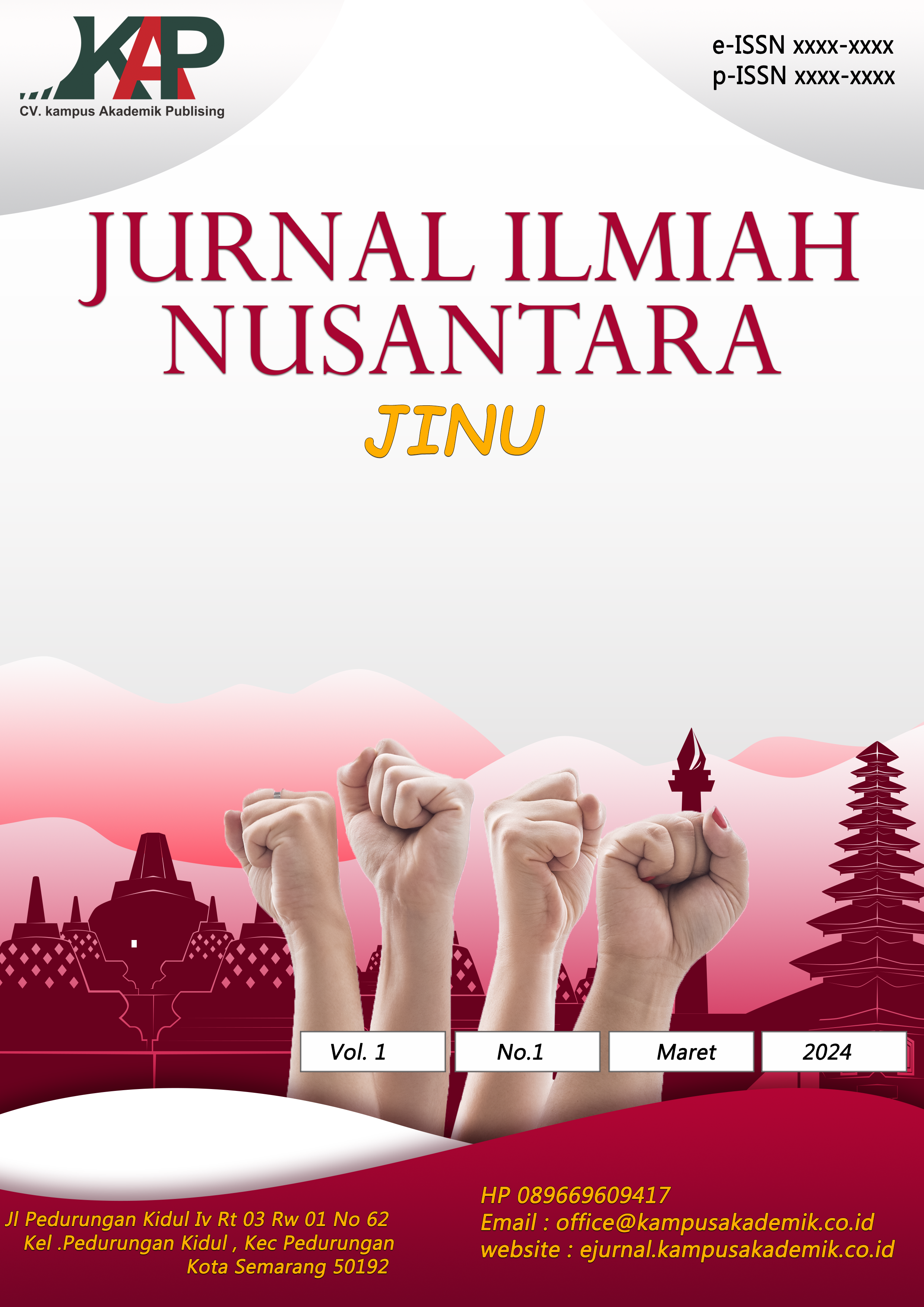Public Views On Traditions Tradition Of Tompangan in Walimat Al-'Urs Perspective 'Urf; Case Study in Gersik Putih Village, Gapura District, Sumenep Regency
DOI:
https://doi.org/10.61722/jinu.v1i4.2269Keywords:
Tompangan Tradition, Walimat Al-’Urs, ’UrfAbstract
Purpose – This thesis aims to find out the review of Islamic law and the community's view of the Tompangan tradition in Waliamt Al-'Urs in Gersik Putih Village, Gapuran District, Sumenep Regency, what is the 'urf's view of the existence of this tradition.Methods – This research is descriptive qualitative research using field or empirical studies using a sociological approach. In obtaining data, the author used three data collection techniques, namely interviews, observation and documentation. Meanwhile, in the analysis used are techniques for data reduction, presentation and drawing conclusions.Findings – The Tompangan tradition according to the 'Urf perspective can be categorized as follows: First, seen from the perspective of its object, the tompangan tradition in Gersik Putih Village includes 'Urf amali (habits in the form of actions), Second, seen from the perspective of its scope, the Tompangan tradition includes 'Urf khass (customs that apply in an area, thirdly, seen from the perspective of validity in the syara' of the tompangan tradition including 'Urf al-Sahih because the tompangan tradition does not conflict with the Koran and hadith, does not negate human benefit, and does not bring danger.Research implications/limitations – , on the other hand, the Tompangan tradition is a legacy from the ancestors that must be maintained, but for poor people it is considered an unnecessary financial waste, on the grounds that the money spent on Tompangan can be used for more urgent needs, because they feel burdened by social pressure. associated with providing support, feel forced to make large donations just to maintain their reputation in the eyes of society.Originality/value – Traditions in Indonesia are very diverse and people's views are also different. Comparing views is an interesting thing because changing times can affect the existence of law.
References
Al Qur’anul Karim
Abdul Wahid, Mustafa. Hukum Islam Kontemporer, Jakarta: Sinar Grafika, 2013.
Djazuli. A. Kaidah-Kaidah Fikih:Kaidah-Kaidah Hukum Islam Dalam Menyelesaikan Masalah-Masalah Yang Praktis cet ke-1, Jakarta: Prenada media Group, 2006.
Haroen, Nasrun. Ushul Fiqih I, Jakarta: Logos Wacana Ilmu, 2001.
Miswanto. Agus. Ushul Fiqih : Metode Ijtihad Hukum Islam cet ke -1, Yogyakarta : Magnum Pustaka Utama 2019
Piotr, Sztompka. Sosiologi Perubahan Sosial, Jakarta: Prenada Media Grup, 2007.
Romli, Pengantar Ilmu Ushul Fiqh Metodologi Penetapan Hukum Islam, Depok: Kencana.2017
Saebani, Beni Ahmad, Ilmu Ushul Fiqih cet ke-1, Bandung: Pustaka Setia.2009.
Setiady. Tolib. Intisari Hukum Adat Indonesia. Bandung: Alfabeta cv. 2008
Sudarsono. Pokok pokok hukum islam, cet ke-1, Jakarta: Rineka cipta, 1992.
Undang – Undang Nomor 1 Tahun 1974 Tentang Perkawinan.
Van, Peursen. Strategi Kebudayaan, Yogyakarta: Kanisisus, 1988.
Wawancara dengan bapak Busri, pada 17 Januari 2024.
Wawancara dengan bapak Muhab pada 17 Januari 2024.
Wawancara dengan K. Suto pada 16 Januari 2024.
Downloads
Published
Issue
Section
License
Copyright (c) 2024 JURNAL ILMIAH NUSANTARA

This work is licensed under a Creative Commons Attribution-ShareAlike 4.0 International License.













